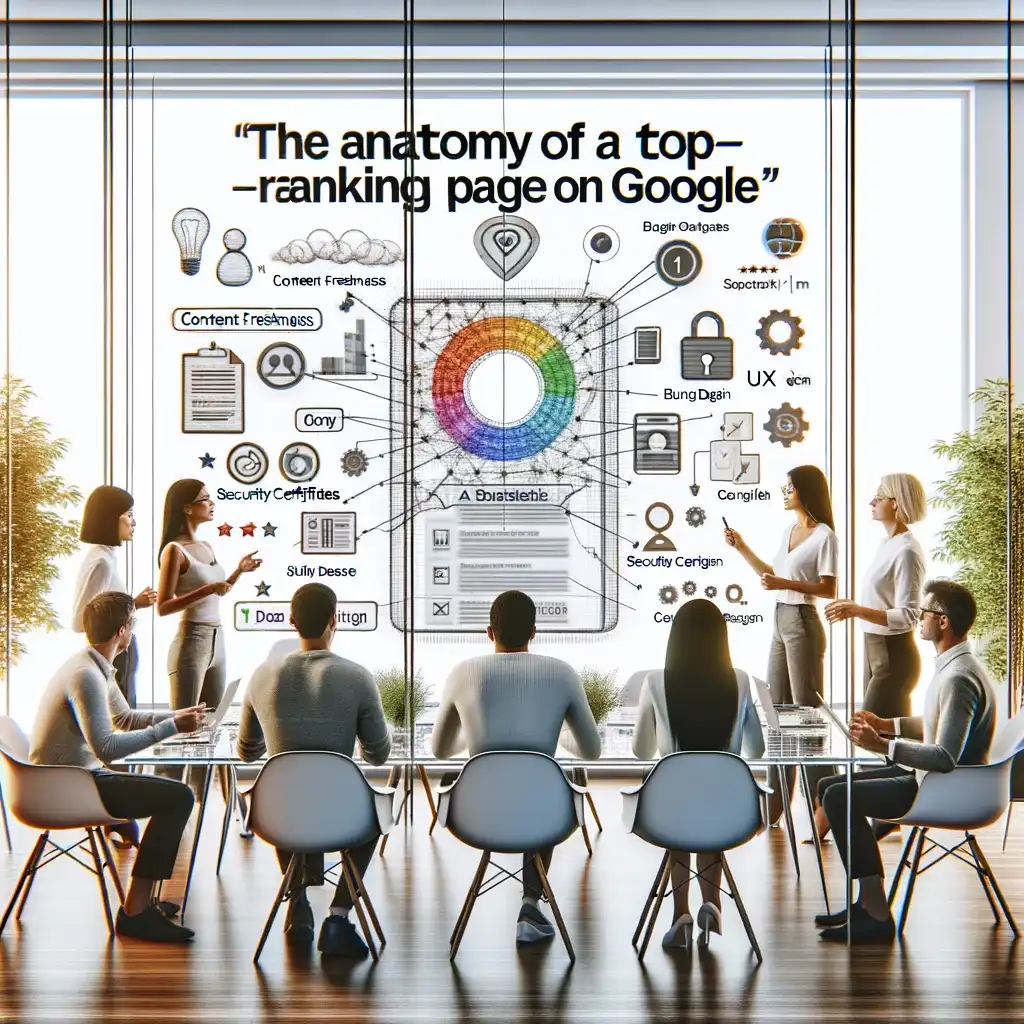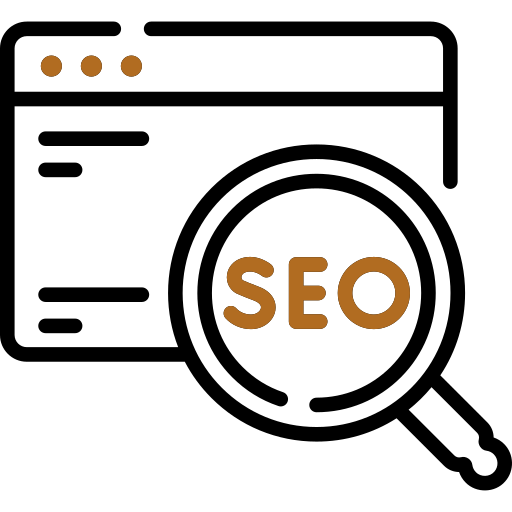Information is vast and attention spans are fleeting, securing top spots in Google search results has become a holy grail for businesses and content creators.
This article examines the layers of Google’s complex algorithmic ecosystem. We’ll take a look at the latest updates and explain what they mean for your digital presence and how they’re changing the fundamentals of website design and branding. Focusing on the forest and the trees, we’ll explore the macro trends in SEO strategies and the micro-adjustments needed to stay ahead of the curve. From understanding the nuances of semantic search to adapting to a mobile-first indexing pattern, we’ll explore the nuances of Google’s complex algorithms.
As we delve into the heart of Google’s SEO maze, we equip you with the insights you need to create content that not only resonates with the giant’s algorithms, but also engages and converts your human audience. Whether you’re a seasoned SEO strategist or a digital marketing novice, this article is your compass to not only survive, but thrive in the dynamic world of search engine rankings.
Google SEO Core Revealed: What’s Working in 2023
In the realm of digital marketing, the only constant is change—especially when it comes to Google’s SEO algorithms, which define the ebb and flow of online visibility. 2023 is no exception, with significant Google algorithm updates changing the digital landscape. For businesses, marketers, it is very important to succeed online.
Google’s SEO algorithms are complex systems designed to provide the most relevant and quality content to users. The latest Google algorithm update emphasizes the importance of user-centered content, intuitive site design, and technical excellence.
Google’s sophisticated algorithms support websites that provide a seamless user experience with content that meets search intent on both a contextual and experiential level.
Content creators now need to become skilled storytellers and naturally incorporate keywords like Google SEO Algorithms into their narrative. Each mention should enrich the content, not detract from it. It’s about striking a balance – making sure that while your content is optimized for search engines, it also provides real value to your readers.
In addition, technical SEO is more important than ever. Site speed, mobile responsiveness, and structured data play an essential role in aligning with Google’s SEO algorithms. Your site infrastructure must be strong and agile and ready to adapt to the next wave of algorithmic changes.
It is clear that Google’s algorithms will continue to evolve and that artificial intelligence and machine learning will play a larger role in determining SEO strategies.
In the intricate dance with Google’s algorithms, the winners will be those who listen to the rhythm of updates and move in sync with the fluidity of SEO trends.

The Secret of Google Ranking: Decoding the Latest SEO Algorithms
It’s time to demystify the secrets of Google’s SEO algorithms and chart a path to the top of search engine results.
At the heart of Google’s SEO algorithms is the importance of high-quality content. The latest updates have emphasized this by rewarding content that provides real value, taking into account expertise and trustworthiness. This means creating content that resonates with your audience, answers their questions, and provides insights beyond the surface.
While content is king, technical SEO is the unseen scaffolding of the kingdom. Google’s updated SEO algorithms put a new emphasis on the technical elements of your website. From improving site speed to ensuring mobile optimization, these fundamental aspects of your site can make or break your Google rankings.
User experience (UX) has become the new currency of Google’s SEO algorithms. Websites that provide an intuitive and user-friendly interface are rewarded. Google’s recent algorithm update has put UX at the forefront, showing that user engagement metrics like click-through rate, time on site, and bounce rate are more influential than ever.
Deciphering Google’s SEO algorithms is an ongoing journey, one that requires agility and conscious strategy. By focusing on creating valuable content, strengthening the technical aspects of your site, and enhancing the overall user experience, you’ll be well on your way to unlocking the secrets of Google rankings.
From Panda to BERT: The Evolution of Google’s SEO Algorithms
The landscape of digital marketing is always evolving, and Google’s SEO algorithms are at the forefront of this evolution. From the fundamental changes introduced by Panda to the fine-tuning of BERT, the trajectory of these updates shows a relentless effort to enhance user experience and content quality. Let’s embark on a journey through the evolution of these algorithms and explore their implications for website design and branding.
The prequel to Panda
When the Panda update was introduced, it fundamentally changed the digital landscape. This pivotal update to Google’s algorithm targeted low-quality sites, those loaded with thin content and too many keywords, setting a new record for content value. Panda taught us that quality trumps quantity and set the stage for all future Google SEO algorithms.


The prequel to Panda
When the Panda update was introduced, it fundamentally changed the digital landscape. This pivotal update to Google’s algorithm targeted low-quality sites, those loaded with thin content and too many keywords, setting a new record for content value. Panda taught us that quality trumps quantity and set the stage for all future Google SEO algorithms.
Hummingbird flight
With the introduction of Hummingbird, Google took a giant leap forward by focusing on the intent behind search queries rather than the keywords themselves. This sophisticated approach to indexing and ranking content has led site designers to create more intuitive and user-centric sites that meet the real needs of searchers.


Mobilegeddon Responsive Revolution
Then came Mobilegeddon, an update that served as a wake-up call for the mobile age. This emphasizes the necessity of responsive design and ensures that sites can be easily accessed and navigated on mobile devices. This Google algorithm update was not only a priority, but a priority for any brand looking to stay relevant.
RankBrain Progress
Enter RankBrain, a machine learning-based update that brings a layer of artificial intelligence to Google’s SEO algorithms. Understanding the context became as important as the keywords themselves, resulting in content that was as smart and searchable as possible.
BERT failure
Recently, BERT has taken center stage by using natural language processing to better understand the nuances and context of words in search. The update is perhaps the most significant leap forward in Google’s quest to understand human language, requiring content creators to think more deeply about how their audience speaks and searches.
The evolution of Google’s SEO algorithms from Panda to BERT represents a continuous narrative of innovation and user-centricity. For web design and branding professionals, understanding and adapting to these changes is not just about keeping up, it means cost leadership in the digital world. As we continue to see the growth and sophistication of these algorithms, one thing is clear: the future of SEO is bright and belongs to those who prioritize the voice and user experience above all else.
Anatomy of a top ranking page in Google
Getting the top ranking on the Google search results page is like owning the crown jewels. This is a feat that requires finesse, strategy and a thorough understanding of Google’s SEO algorithms. Let’s break down the anatomy of a top ranking page:
Heartbeat: Quality content
The core of a top-ranking page is quality content—the heartbeat that pumps life into your SEO efforts. It’s not just about peppering your text with keywords. It’s about creating content that connects and provides value to your audience. Since the last Google algorithm update, content quality has become very important with a focus on depth, authenticity and user engagement.
Backbone: Technical SEO
This technical SEO support is the backbone of your page. A top-ranking page has a strong structure, with clean code, optimized meta tags, and a seamless navigation experience. With the precision of Google’s SEO algorithms, even the tiniest of technical mistakes can be the difference between top rankings and obscurity.
Nervous System: User Experience (UX)
User experience (UX) is the nervous system that connects every element of your page. Google algorithm updates increasingly prioritize pages that provide an intuitive and frictionless user journey. From mobile responsiveness to fast load times and accessible design, a top-ranking page should respond to a user’s every need with almost telepathic sensitivity.
Muscles: Backlinks
The muscle behind a top ranking page is its backlink profile. Strong and reliable backlinks from reliable sites act as confirmation, giving credibility and power to your page. Google’s SEO algorithms are adept at distinguishing between the risky muscle of quality backlinks and the weakness of low-quality link schemes.
Lungs: Keyword Optimization
Breathing content into your content are keywords—the lungs of your page. A top-ranking page uses keywords strategically and naturally, ensuring that they are integrated in a way that supports the message of the content, not overwhelms it. Recent updates to Google’s SEO algorithms have refined the way keywords contribute to page ranking by focusing on context and user intent as much as frequency.
Security system: security and trust
A top rated page should also have a strong security system that is characterized by security and trust. HTTPS encryption, privacy policies, and transparent management of user data are all elements that Google’s algorithms recognize as signs of a trustworthy page and contribute to its ranking potential.
Digestive system: content novelty
Google’s appetite for fresh content is insatiable, making the freshness factor your page’s digestive system. Regular updates, timely topics, and constant optimization show Google’s SEO algorithms that your page is not only alive, but thriving and evolving.
Conclusion: The sum of its components
The anatomy of a top-ranking page on Google is complex and nuanced, reflecting the complex workings of Google’s SEO algorithms.
It is a holistic body where every part must work in harmony with the others. As Google continues to refine its algorithm updates, the blueprint for a top-ranking page will evolve, but the principles of quality content, technical excellence, user-centered design, and an authentic presence remain the same. By understanding and nurturing each component, your page can aspire to achieve and maintain its position at the top of Google’s search hierarchy.

SEO Myths Busted: What Google’s Algorithms Really Look At
Understanding Google’s SEO algorithms is like cracking a cryptographic code that monitors the visibility of your online presence. Let’s get the facts straight and dispel the myths to reveal what Google’s SEO algorithms are really looking at.
Myth 1: More keywords mean higher rankings
Once upon a time in the digital age, keyword stuffing was the obvious secret to climbing the SEO ladder. However, Google’s algorithms have matured and prefer relevance and context over sheer value. The complex nature of Google’s current SEO algorithms understand user intent and make relevance and keyword placement more important than ever.
Myth 2: Links, links, and more links
The link building craze has led many to believe that the more backlinks a site has, the better its ranking. But as Google’s SEO algorithms have become more refined, the emphasis on link quality and relevance has changed. A site with fewer quality links can be higher than a site with many weak links.
Myth 3: SEO is a one-time startup
Many believe that SEO is a set it and forget it. This myth crumbles under the fact that Google’s algorithms are constantly updated, requiring SEO strategies that are dynamic and adaptive. Regular audits, updated content, and constant optimizations are critical to staying ahead of the rankings.
Myth 4: Images and videos do not affect SEO
A picture is worth a thousand words and in SEO it is worth digital gold. Google’s algorithms now account for the user interaction that images and videos can command. Alt text for images and transcripts for videos are just some of the ways multimedia can boost SEO.
Myth 5: Mobile optimization is optional
As mobile devices become the primary gateway to the Internet, the myth that mobile optimization is unnecessary is not only outdated, but harmful. Google’s SEO algorithms prioritize mobile-friendly sites by considering the mobile experience in ranking decisions. Ignoring mobile users is not an option if you are looking for top rankings.
Therefore, be aware and flexible
Dispelling these myths reveals a clearer picture of what Google’s SEO algorithms prioritize: quality, relevance, and user experience.
As Google continues to refine its approach to ranking with each algorithm update, staying informed and flexible is key. By building a solid foundation on SEO facts, your site will not only rank, but provide real value to your audience. In the dynamic world of SEO, the only constant is change, and being prepared to adapt is what will keep you at the forefront of digital marketing.
last word
In the digital landscape, the central role of google seo algorithms goes beyond mere optimization. They underpin digital innovation and dictate how content is found, interacted with, and valued.
As silent but powerful arbiters of online success, algorithms navigate the endless sea of data to match user queries with content that is not only relevant, but authentic. They outperform traditional methods by providing unparalleled personalization and efficiency, creating unique experiences for users, and ensuring the visibility of worthy content.
In fact, algorithms are the heartbeat of digital progress, fueling innovation and adding value in a competitive online marketplace. Their importance is profound – they are the catalysts for progress in our information-driven age.
For any organization that aspires to digital excellence, harnessing the power of algorithms is not an option, but a necessity. It is in this arena that Flexinexa stands out, providing SEO services that harness the full potential of these algorithms to elevate your content and brand to the pinnacle of digital success.















